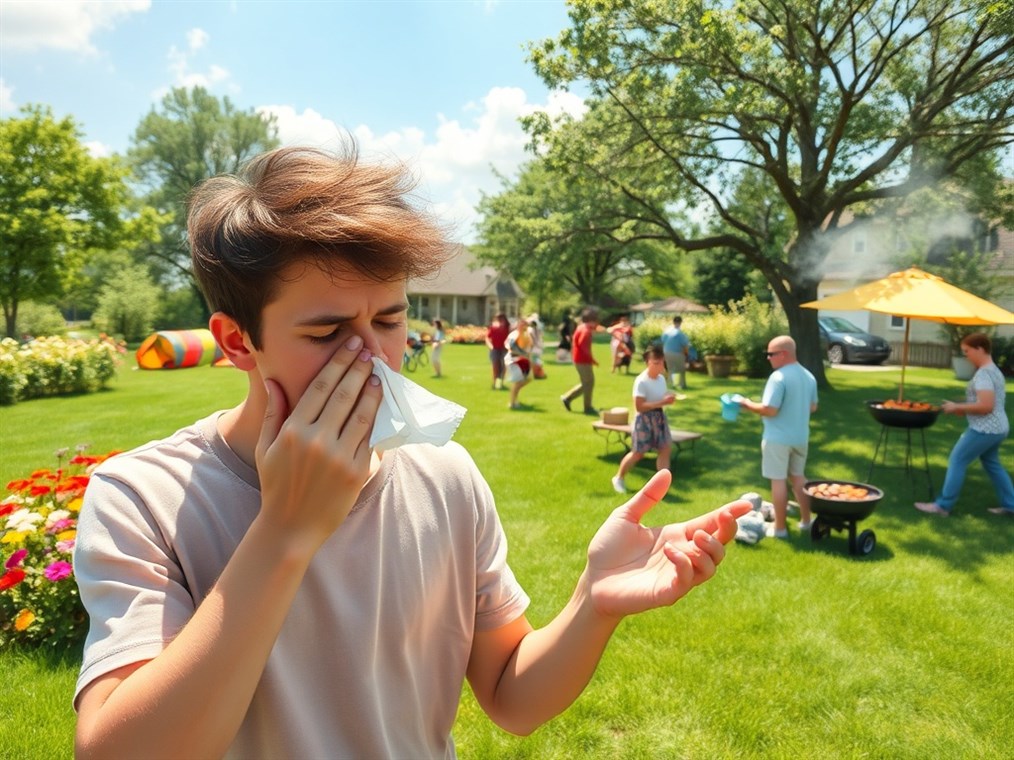Is It Normal to Have Allergies in July? Let’s Talk Summer Sneezes!
Summer! Sunshine, barbecues, and… allergies? If you find yourself reaching for the tissues more than the sunscreen in July, you’re definitely not alone. It’s super common to have allergies this time of year. In fact, for many of us, July is prime allergy season.
So, what’s making us sniffle and sneeze? Unlike the tree pollen that dominates spring, summer allergies have their own cast of characters. Knowing who the usual suspects are can really help you get a handle on things. Here’s the lowdown:
- Grass Pollen: The Green Menace. Grasses are practically everywhere, and unfortunately, so is their pollen. Think Bermuda, Timothy, Kentucky bluegrass – these guys are major allergy offenders. Grass pollen season kicks off in late spring and hangs around through early summer, usually peaking right about now.
- Weed Pollen: Ragweed and Its Rowdy Friends. Just when you thought you were safe, weed pollen enters the chat! July marks the beginning of weed pollen season, and ragweed is the biggest troublemaker. Seriously, a single ragweed plant can pump out a billion pollen grains, and they can travel for miles!
- Mold: The Sneaky Spore Source. Outdoor molds are another common cause of summer misery. They love humidity, so depending on the weather, mold spores can be all over the place. Some types spread in dry, windy conditions, while others thrive when it’s damp and muggy.
- Dust Mites: Tiny Indoor Irritants. Okay, these guys are around all year, but they often get worse in the summer because of the humidity. They’re basically microscopic roommates that love warm, humid spots in your house.
Why is July such a hotspot for allergies? Well, a few things come together to make it the perfect storm:
- Pollen Overload: Grass pollen is usually at its highest in July, and weed pollen starts to ramp up too. It’s like a double whammy for your sinuses!
- Weather Woes: Warm weather and long days are basically a pollen and mold party. Dry, windy days help pollen spread like wildfire, while humid days are a mold’s dream come true.
- Outdoor Adventures: Let’s face it, summer is all about being outside. More time outdoors means more exposure to pollen, mold, and even the occasional bee sting.
The symptoms? You probably know them well:
- Runny or stuffy nose – the classic!
- Non-stop sneezing.
- Itchy, watery eyes. Ugh.
- That scratchy, itchy feeling in your nose and throat.
- Congestion that just won’t quit.
- And sometimes, a nagging cough.
Some people even experience something called Pollen Food Allergy Syndrome (PFAS), or Oral Allergy Syndrome. Basically, your lips might tingle, your mouth might swell, or your throat might feel scratchy after eating certain raw fruits and veggies. Weird, right?
So, what can you do to survive allergy season? Here are a few tips that have worked for me:
- Become a Pollen Detective: Keep an eye on the local pollen forecasts. Weather apps and websites are your friends! Plan your outdoor activities for times when pollen counts are lower.
- Create a Pollen-Free Zone: Keep your windows and doors closed, especially during peak pollen times. Shower and change your clothes after being outside to get rid of any sneaky pollen. And skip hanging laundry outside – pollen loves to hitch a ride on your clothes!
- Arm Yourself with Over-the-Counter Meds: Antihistamines, decongestants, and nasal steroid sprays can be lifesavers. I like to start taking them a couple of weeks before allergy season really kicks in.
- Control Your Indoor Environment: Invest in an air purifier with a HEPA filter. Trust me, it makes a difference! Regularly clean your house to keep dust mites and mold at bay. And try to keep the humidity down to discourage mold growth.
- Call in the Experts: If you’re still struggling, don’t hesitate to see an allergist. They can do allergy testing to figure out exactly what you’re allergic to and create a personalized treatment plan.
The bottom line? Allergies in July are super common, thanks to grass and weed pollen, mold, and those pesky dust mites. But by understanding what’s causing your symptoms and taking some simple steps to manage them, you can actually enjoy your summer! Stay informed, reduce your exposure, and don’t be afraid to ask for help. Here’s to breathing easy!

